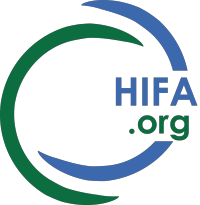Dear HIFA and HIFA-Zambia colleagues,
This paper finds 'it is possible to improve access to safe cervical cancer prevention services during the COVID-19 pandemic in WLHIV through a coordinated approach among key stakeholders and service providers'. Another way of reading this might be "there is no alternative to well-supported, coordinated services - no quick wins for low-resource settings". Are you involved in a cancer screening programme? What has been your experience during COVID-19?
CITATION: Cervical cancer prevention during COVID-19 pandemic: The CRS EPIC3-90 project, Zambia.
Topics in Antiviral Medicine. Conference: Conference on Retroviruses and Opportunistic Infections, CROI 2021. Virtual. 29 (1) (pp 175), 2021. Date of Publication: March 2021.
Chaila M.J et al.
ABSTRACT
Background: The Epidemic Control 90-90-90 (EpiC 3-90) Project is a U.S Centers for Disease Control & Prevention (CDC) funded project that supports the Ministry of Health (MOH) in Zambia to achieve the UNAIDS 90-90-90 targets in faith-based and Government facilities. The project also supports prevention activities including cervical cancer (CaCx) screening in Women Living with HIV (WLHIV). CaCx remains the most frequent cancer in Zambia accounting for about 25% of all new cancer cases annually. It is also the most common cause of cancer related death in the country. EpiC 3-90 carried out technical support to the 15 supported districts from April 2020 to September 2020 to improve the CaCx screening in WLHIV.
Method(s): EpiC 3-90 created an HIV prevention & comorbidities unit, with adequate staffing to support the establishment of CaCx screening points in supported regions...
Result(s): The average number of WLHIV screened for cervical cancer increased from 242 per month (October 2019-March 2020) to 442 (April-September 2020) indicating 82.6% improvement. This translated to an increase in the number of WLHIV who were screened from 1,450 in the first half of the year to 2,651 in the second half of the year. By September 2020, 4,101 WLHIV had been screened for CaCx (Figure 1).
Conclusion(s): It is possible to improve access to safe cervical cancer prevention services during the COVID-19 pandemic in WLHIV through a coordinated approach among key stakeholders and service providers. CaCx prevention services need to continue due to its high disease burden in Zambia.
--
Join HIFA-Zambia: http://www.hifa.org/join/join-hifa-zambia
Neil Pakenham-Walsh, HIFA Coordinator, neil@hifa.org www.hifa.org

